To address the question of how to reseed your lawn and be consistent with yard maintenance, it is essential to address that maintaining lawn health to ensure a lush yard is a goal of many homeowners, and reseeding plays a vital role in achieving this.
Wondering why reseeding your lawn matters for a lush yard? Reseeding is the process of sowing new grass seed in your lawn, and it is essential for grass regrowth and addressing patchy or thin areas.
Yard maintenance through replenishing your lawn with fresh, vigorous grass, you can revitalize its appearance, improve its health, and ensure a green, vibrant landscape for years to come.
The value and effectiveness of reseeding your lawn can be greatly increased by involving professionals in the process. Lawn reseeding expertise offers several significant advantages.
First off, professionals have in-depth knowledge of the local climate, soil types, and grass species that grow well in your location. They can choose the best seed kind and modify the reseeding procedure to meet your particular requirements.
Expertise enables accurate seed placement and appropriate depth, optimizing germination rates. In less time, you can have a lush, colorful lawn since the grass grows faster and more consistently as a result.
Experts can also offer helpful guidance on routine upkeep, watering regimens, and fertilization to guarantee the long-term health of your grass.
In conclusion, having professionals reseed your lawn is important because they can maximize efficiency, knowledge, and outcomes for a healthier, greener, and more beautiful outdoor space.
Before reseeding, yard evaluation of your grass is a crucial first step in guaranteeing a successful and flourishing yard. In this yard assessment procedure, the areas that need to be reseeded are identified, and the best time to start the process is chosen.
Thoroughly evaluating your lawn before reseeding is essential. A thorough evaluation of the grass should be done first. This entails a careful examination of your entire yard. Look for indications of thin or uneven grass, bare places, or weed-filled regions.
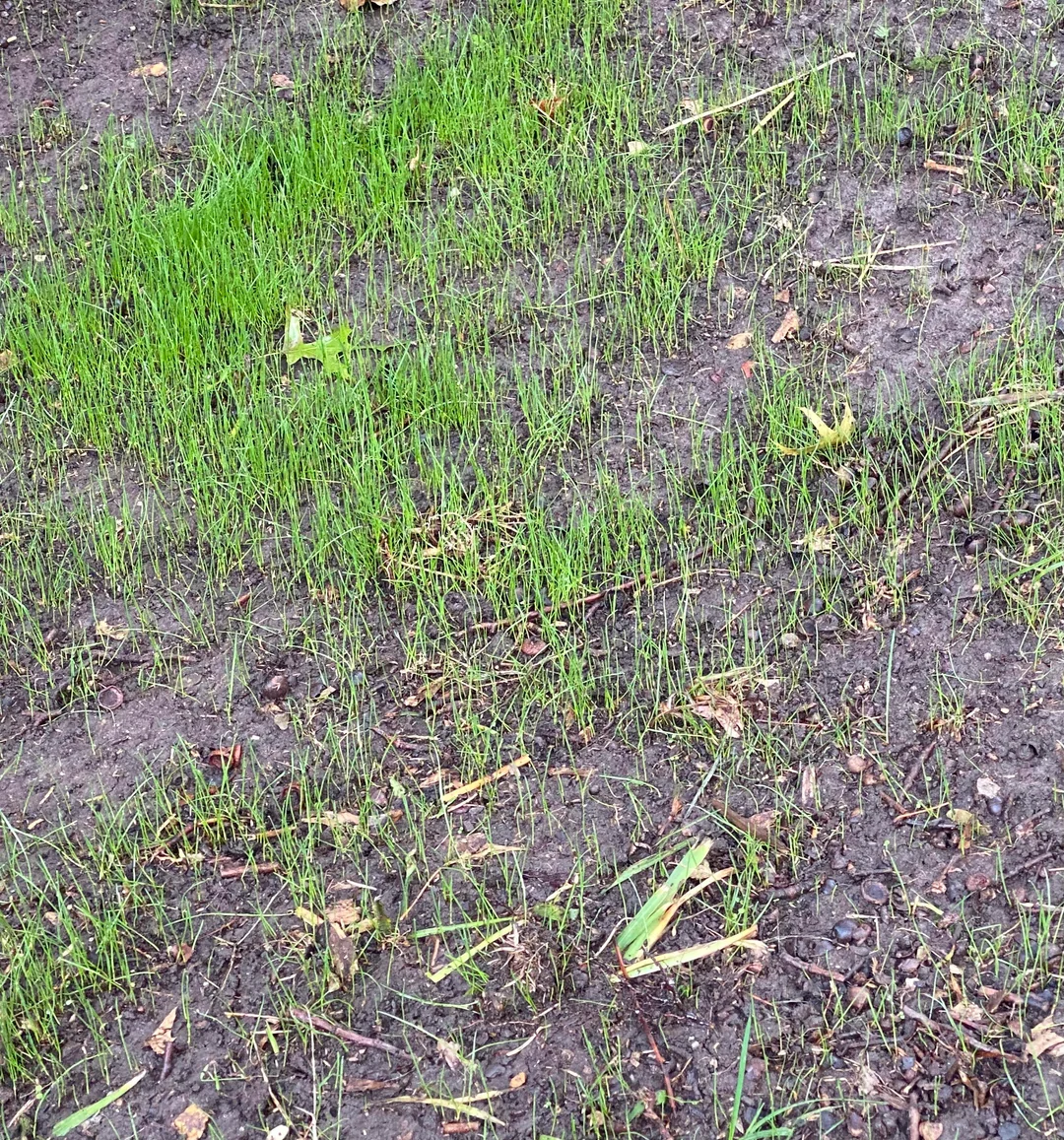
Identifying lawn issues is a crucial part of this assessment.
Before reseeding, problems with soil compaction, pest infestations, or poor drainage should be fixed. Experts can shed light on these problems and give remedies to make sure the new grass properly takes root.
Furthermore, starting the reseeding procedure in the optimal reseeding season is important.
The best time to reseed typically depends on where you live and the environment there. The optimal dates for reseeding are often early fall and early spring.
In conclusion, evaluating your lawn before reseeding and detecting problems are crucial stages and choosing the ideal reseeding time can significantly affect the outcome of your lawn restoration process.
For a lush and durable turf, selecting the best grass seed for your lawn is an essential first step. When making this decision, several things should be taken into account because the appropriate grass seed can have a big impact on the health and appearance of your lawn.
The different types of grass include:
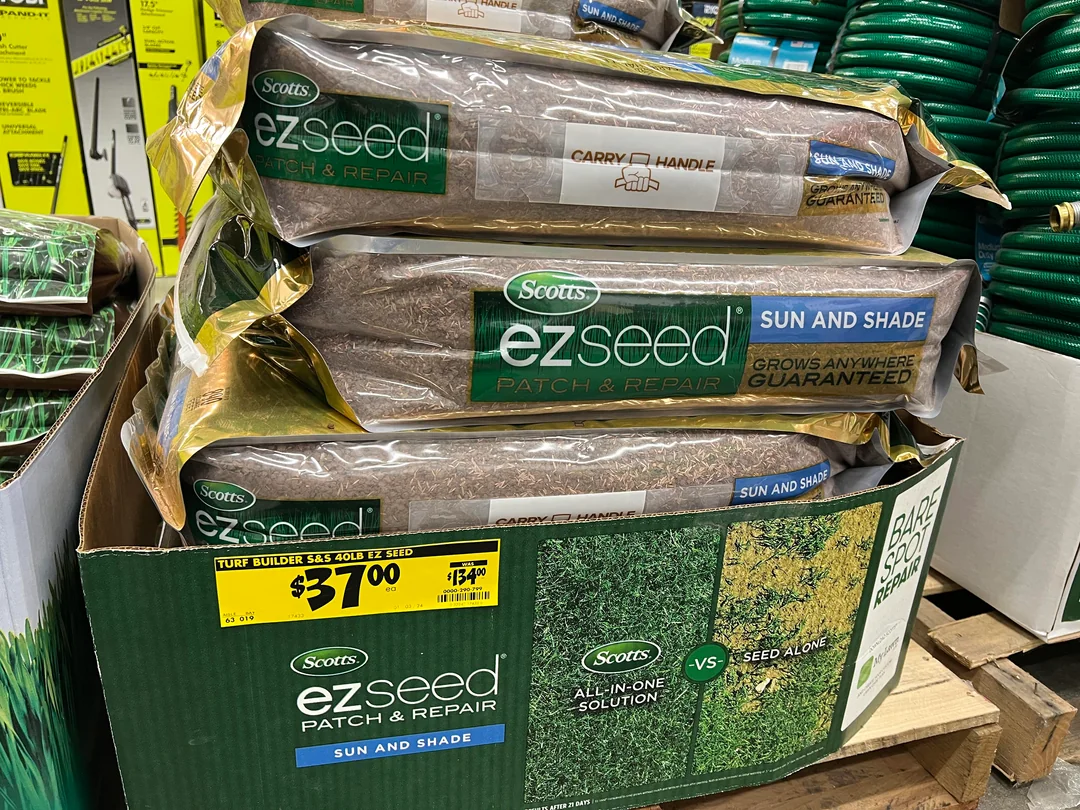
The climate in your area is crucial. Different types of grass are more adapted to certain climates. For instance, warm-season grasses like Bermuda and Zoysia do well in warmer locations, whereas cool-season grasses like Kentucky bluegrass and fescue flourish in cooler climates. The best growth is ensured by matching your grass type to the local climate.
It's important to know your soil type. While certain grasses thrive in clay or loamy soils, others prefer sandy soils. To ascertain the soil's composition, pH levels, and nutrient content, perform a soil test. You can choose a grass seed that can adapt to your soil conditions with the help of this information.
Many variables are involved, including soil moisture levels, foot movement, and sun and shade exposure. Drought-resistant grass species may work well in sunny places whereas grasses that can tolerate shade may be needed in sunny areas.
By considering these elements, you may choose grass seed with knowledge, resulting in a lawn that flourishes in your particular climate, soil type, and lawn circumstances.
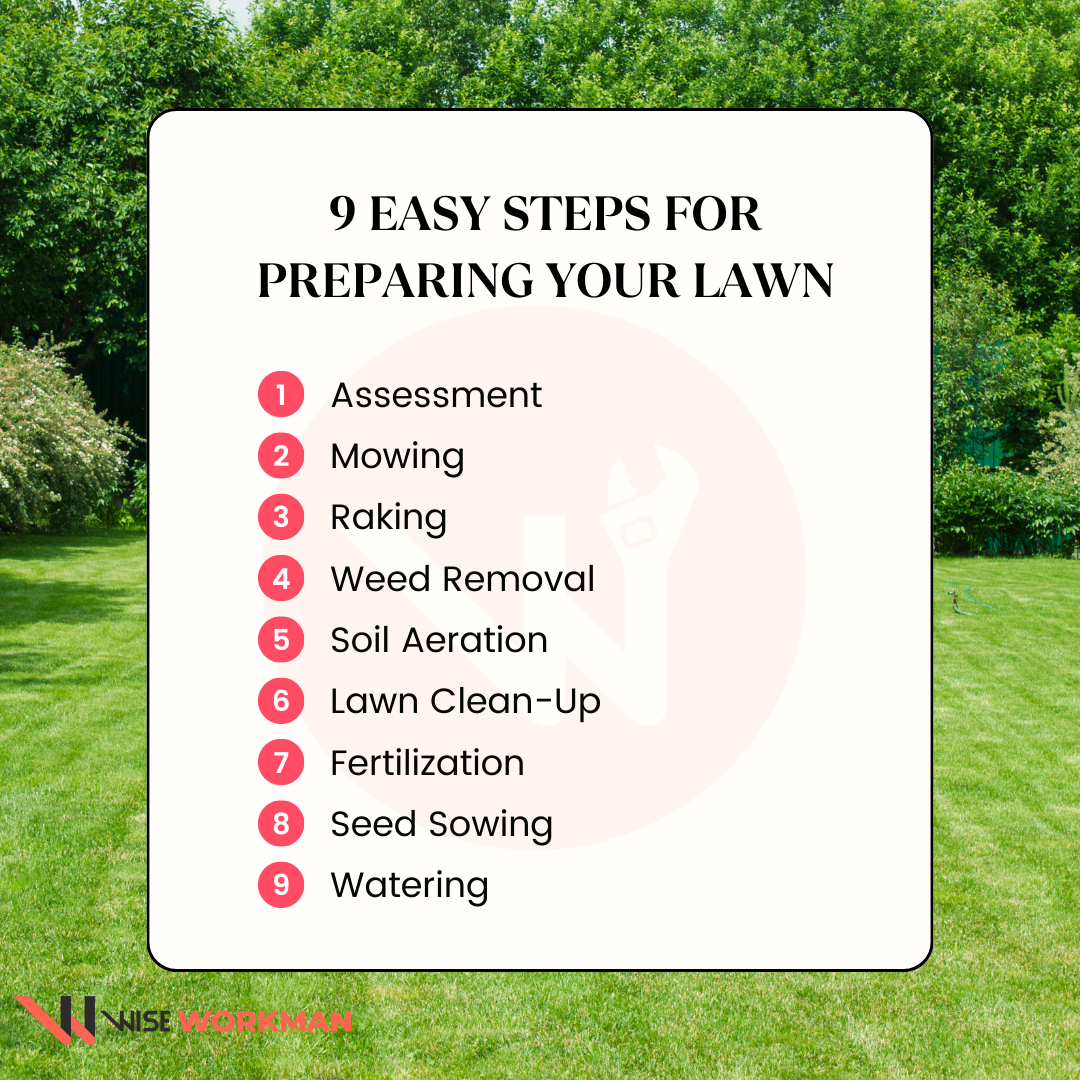
Getting your lawn ready for reseeding involves several key steps to ensure the success of your lawn restoration project.
Follow this step-by-step guide:
To start, assess your lawn to find any places that need to be reseeded. Keep an eye out for weed infestations, bare spots, and diminishing grass.
Cut your lawn to a height of around 1-2 inches before reseeding. Exposing the soil and existing grass, makes it simpler for fresh seeds to make touch with the ground.
In the places where you intend to reseed, use a rake to break up the top layer of soil. Doing this removes any thatch and improves the seedbed for your new grass.
Before reseeding, take care of any weed issues. To get rid of weeds, pull them out or use an appropriate herbicide. This avoids competing for nutrients and space with the emerging grass.
If your soil is compacted, you should think about aerating it. Aeration optimizes water penetration, improves soil structure, and encourages root growth.
Clear the surface of the lawn of any trash and dead grass. Reseeding can go more easily in a spot that is tidy and uncluttered.
Apply a starting fertilizer or compost to the soil to replenish it with the vital elements that promote seed germination and the early growth of grass.
Finally, uniformly distribute the grass seed over the areas that have been prepared, using the suggested seeding rate for the variety of grass that you have selected.
After sowing, thoroughly water the sown regions. Till the new grass is tall enough, keep the soil continually moist.
These methods will help you efficiently prepare your lawn for reseeding, giving your new grass the best chance to take root and flourish in your yard. And you will able to achieve a lush green lawn again.
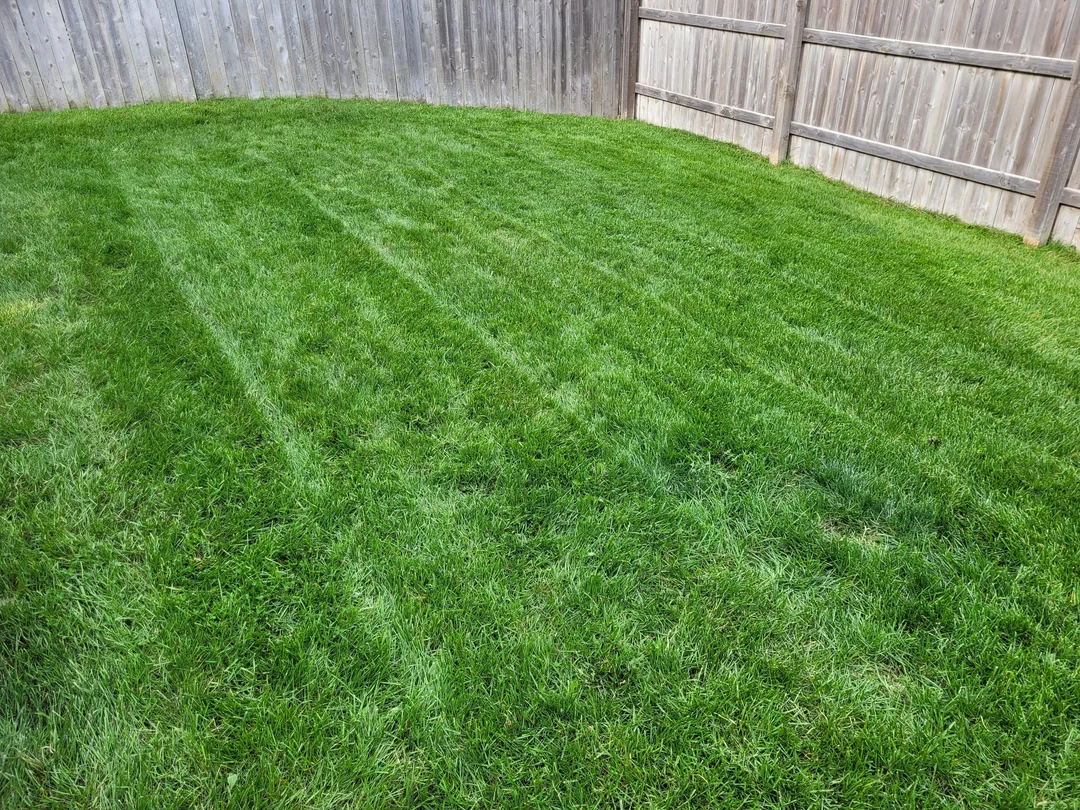
Your lawn reseeding effort will be a success if you choose the right precision seeding technique. Broadcast seeding and Spot seeding are two frequently employed lawn seeding options, each of which has advantages and is appropriate for certain grass requirements.
| Seeding Technique | Description |
|---|---|
| Broadcast Seeding | This technique entails equally distributing grass seed across the entire lawn. It is an effective approach to quickly cover big regions. Broadcast seeding is a common option for establishing a new lawn or overseeding an existing one. It works especially well for uniform, dependable covering. |
| Spot Seeding | Spot seeding focuses on certain areas needing reseeding, including barren spots or diminishing grass. With this strategy, you can focus on problem regions while saving seed and effort because it is more exact and conservative. It's perfect for small-scale issues. |
The needs of your grass will determine whether to broadcast or spot seed. The best method for an even spread of seed is broadcast seeding if your entire lawn needs rejuvenation or overseeding.
In some circumstances, combining the two approaches may be the best course of action because it offers thorough coverage while focusing on particular problem areas. In the end, your reseeding goals and the specific needs of your lawn should guide your choice of seeding technique.
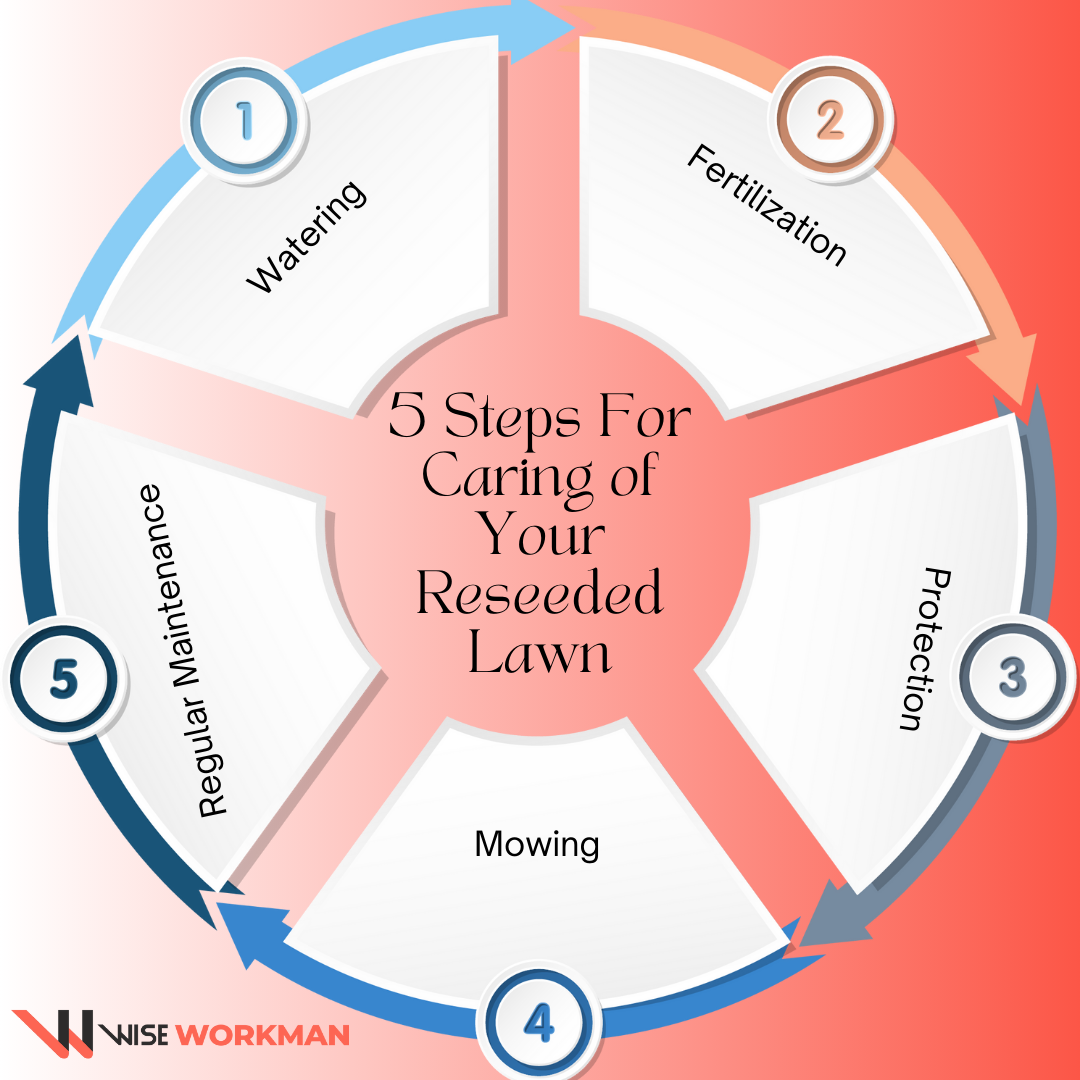
Taking care of your reseeded lawn is essential to ensuring that the new seedlings take root and flourish. Here is a guide to post-reseeding lawn maintenance that covers important topics including watering, fertilizing, and safeguarding the new grass.
To keep the soil from drying out, water sparingly yet frequently. You can progressively cut back on watering once the new grass is roughly 2 inches tall.
Apply a slow-release, balanced fertilizer around 6 to 8 weeks following reseeding. This gives the young seedlings the vital nutrients they need for strong growth. Avoid overfertilizing to prevent harm to the sensitive grass.
Keep people off the newly reseeded areas for at least a month, or until the grass is firmly established. Put up fences or signs to keep people and animals apart. Protect yourself from potential pest damage and weed competition as well.
Before beginning, let the grass grow to a height of three inches. To avoid harming the tender grass, make sure your mower's blade is sharp.
To nurture the young grass as it matures, keep up with routine lawn maintenance tasks like weeding and insect control.
New growth care and nurturing your new seedlings encourage the growth of a strong, lush lawn according to these post-reseeding care instructions. Your reseeded grass will thrive if you water it consistently, provide it with the right fertilizer, and take preventative steps.
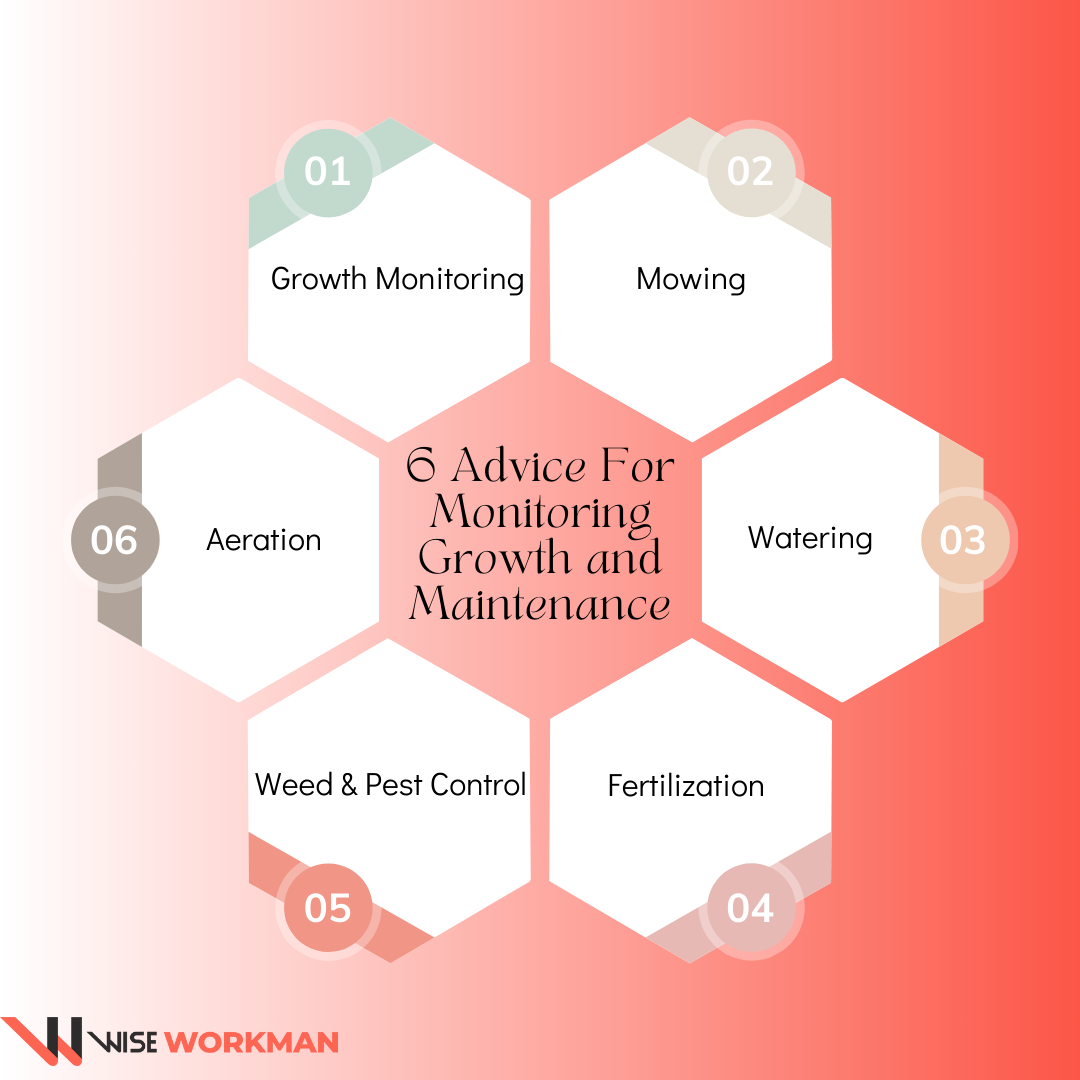
Sustaining the health of your reseeding lawn requires lawn health checks and employing long-term maintenance techniques. Sustainable lawn care will require you to carefully monitor and keep note of the ongoing upkeep required.
Here's how to keep an eye on growth and offer helpful maintenance advice:
Your reseeded lawn requires continuous maintenance and attention to its particular requirements if you want to keep it healthy. You may enjoy a lush, bright lawn for many years to come by keeping an eye on growth and putting long-term maintenance techniques in place.
Let us conclude the answer to the question of how to reseed your lawn. Reseeding your lawn is a transformative process that revitalizes your yard's health and appearance. Key takeaways include assessing your lawn's needs, selecting the right grass seed, and providing post-reseeding care.
The ultimate reward is the satisfaction of enjoying a lush, vibrant lawn that's aesthetically pleasing and a testament to your commitment to maintaining lawn beauty and healthy outdoor space.
Therefore, achieving a lush and healthy lawn through reseeding requires proper care and attention, through which you can reap the rewards of a stunning and thriving landscape.